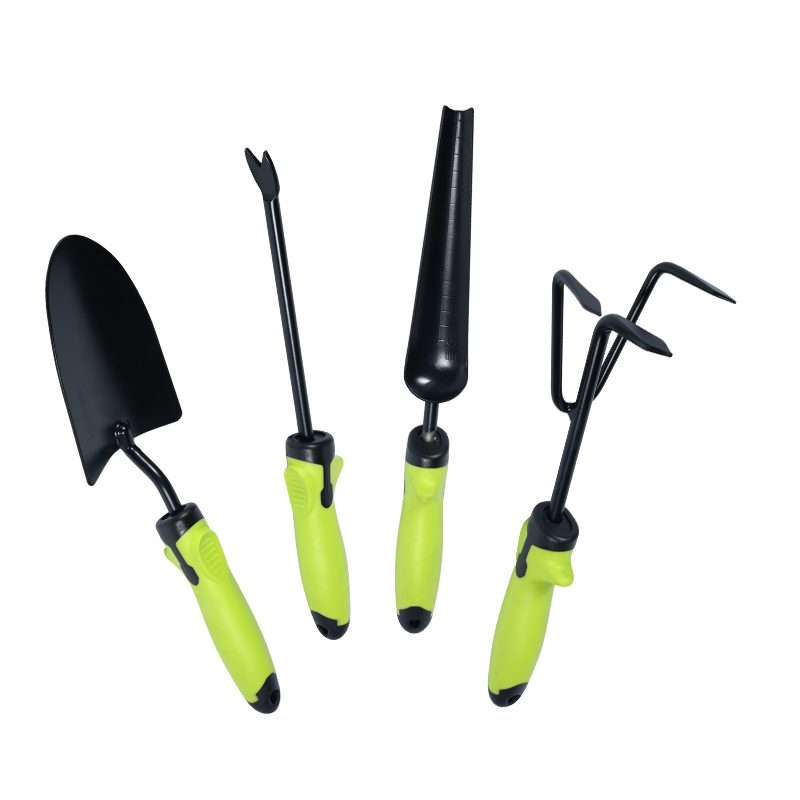Product Consultation
Your email address will not be published. Required fields are marked *
Gardening is a rewarding activity that allows individuals to connect with nature while beautifying their surroundings. However, it also involves various risks, especially when using gardening cultivating tools. This article provides a thorough overview of safe practices, injury prevention, and accident measures associated with gardening cultivating tools. By following these guidelines, you can ensure a safer gardening experience.
Gardening cultivating tools encompass a wide range of implements designed to assist with various gardening tasks. These tools can include trowels, pruners, spades, hoes, cultivators, rakes, and wheelbarrows. Each of these tools serves a specific function, from planting seeds to aerating soil. Understanding how each tool operates is vital for ensuring safe use and preventing accidents.
Common Risks Associated with Gardening Cultivating Tools
While gardening cultivating tools are designed to make gardening easier, improper use can bring about injuries. Some common risks include:
Cuts and Lacerations: Sharp blades on pruners, hoes, and trowels can cause cuts if not handled properly.
Puncture Wounds: Tools with pointed edges can easily puncture skin if they slip during use.
Muscle Strains: Improper lifting techniques or prolonged use of heavy gardening cultivating tools can bring about muscle strains or sprains.
Falls and Trips: Disorganized work areas filled with gardening cultivating tools can create hazards that bring about trips and falls.
Pre-Use Safety Measures
Before engaging in any gardening activity, it’s crucial to conduct a few safety checks to minimize risks associated with gardening cultivating tools.
Before using any gardening cultivating tools, inspect them for any damage or wear. Check for:
Rust or corrosion, which can weaken the tool.
Loose parts or broken handles, which can bring about accidents.
Sharpness of blades; dull blades can slip and cause injuries.
Safety should always be a priority. Wearing the right protective gear can significantly reduce the risk of injury. Essential safety gear includes:
Gloves: Protects hands from cuts and blisters.
Safety Glasses: Shields eyes from debris or sharp objects.
Long Sleeves and Pants: Prevents scratches and cuts from branches and tools.
Sturdy Footwear: Non-slip, closed-toed shoes or boots provide better footing and protection.
Proper Handling Techniques
Using gardening cultivating tools safely involves employing proper handling techniques. Here are some tips to follow:
Always hold gardening cultivating tools firmly with both hands where applicable. This grip provides better control and minimizes the risk of dropping the tool or losing control during use.
Each gardening cultivating tool is designed for specific tasks. For instance, use trowels for digging small holes and pruners for trimming plants. Using tools for unintended purposes can bring about accidents and tool damage.
Dull tools require more force to operate, increasing the likelihood of slipping and causing injury. Regularly sharpen blades and maintain tools to ensure they function effectively and safely.

When not in use, store gardening cultivating tools in a safe place. Avoid leaving them lying around where someone could trip over them. Consider hanging tools on walls or using storage containers to keep them organized.
In addition to pre-use measures, adopting safe work practices can significantly reduce the risk of accidents when using gardening cultivating tools.
Before starting, plan your gardening layout to avoid cluttered spaces. Ensure pathways are clear, and there is ample room to move around without stumbling over tools or debris.
When using gardening cultivating tools, always be aware of your surroundings. Look out for others, especially children and pets, who may unintentionally come into your workspace.
Gardening can be physically demanding. Take regular breaks to prevent fatigue, which can bring about careless mistakes. Listen to your body and avoid lifting heavy tools or materials if you feel strained.
Whenever possible, choose ergonomic gardening cultivating tools that reduce strain on the body. These tools are designed to minimize discomfort during use and can help prevent long-term injuries.
Despite taking precautions, accidents may still occur. It’s essential to know how to respond to injuries when they happen.
For minor cuts, clean the wound with soap and water, then apply an antiseptic and bandage. Keep an eye on the injury for signs of infection.
For puncture wounds, seek medical attention, especially if the wound is deep or if there is significant bleeding. Tetanus shots may be required, depending on the situation.
If you experience a muscle strain, rest the affected area, apply ice to reduce swelling, and consider using over-the-counter pain relief if needed. If the pain persists, consult a healthcare professional.
Gardening cultivating tools are indispensable for maintaining a beautiful garden, but they come with inherent risks. By understanding these risks and following the safety guidelines outlined in this article, you can significantly reduce the chances of accidents and injuries. Always remember to inspect your gardening cultivating tools, wear appropriate safety gear, employ proper handling techniques, and adopt safe work practices. With these precautions in place, you can enjoy your gardening experience while ensuring a safe environment for yourself and others. Happy gardening!
Introducing Children to the World of Gardening with Gardening Cultivating Tools
The Health Benefits of Gardening Cultivating Tools
Your email address will not be published. Required fields are marked *

+86-15381802637

South of Gongye Road and west of Gongye Third Road, Lizhai Industrial Zone, Chengdong Street, Dongyang City, Jinhua City, Zhejiang Province, China

Our goal is to provide the market and customers with customized solutions, whether it is a single product or a complete set of equipment.
If you have anything to consult, you can follow us, we will contact you as soon as possible
Subscribe



